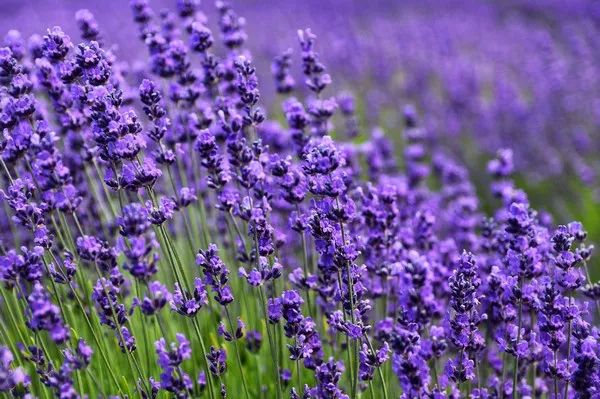Creating a vibrant and colorful garden is a delightful pursuit, but it can be challenging in regions with limited water resources or during dry spells. Fortunately, there are numerous flowers that are exceptionally drought-tolerant, requiring minimal water while still adding beauty and charm to your landscape. In this article, we explore a selection of flowers that don’t need much water, along with practical tips for maintaining a thriving, water-efficient garden and the environmental benefits of choosing drought-resistant blooms.
Drought-Tolerant Flowers: Nature’s Resilient Beauties
Drought-tolerant flowers are a group of plants that have evolved to survive and thrive in arid and water-scarce conditions. Their remarkable ability to conserve water and endure extended periods of dryness makes them a perfect choice for sustainable and water-efficient gardening.
1. Lavender (Lavandula)
Lavender, with its fragrant purple spikes, is not only a beautiful addition to any garden but also a hardy and drought-tolerant plant. It thrives in well-draining soil and requires minimal watering once established.
2. Succulents (Various Genera)
Succulents encompass a vast array of plants, including sedums, echeverias, and agaves. These fleshy plants store water in their leaves, allowing them to survive extended periods without regular watering. They come in various shapes and colors, adding unique textures to your garden.
3. California Poppy (Eschscholzia californica)
The California Poppy is a drought-resistant wildflower known for its vibrant orange blooms. It thrives in sunny locations and has a remarkable ability to withstand dry conditions, making it an excellent choice for water-efficient landscapes.
4. Blanket Flower (Gaillardia)
Blanket Flowers are a cheerful addition to any garden, with their striking red and yellow daisy-like blooms. They are well-suited to hot and dry climates and can bloom continuously throughout the summer with minimal watering.
5. Yarrow (Achillea)
Yarrow is a hardy perennial flower that is both drought-tolerant and low-maintenance. Its feathery foliage and flat-topped clusters of flowers attract pollinators, making it a valuable addition to any water-efficient garden.
6. Russian Sage (Perovskia atriplicifolia)
Russian Sage is an elegant and aromatic plant with silver-gray foliage and lavender-blue flowers. It is exceptionally drought-tolerant and can add a touch of elegance to your garden without demanding much water.
7. Globe Thistle (Echinops)
Globe Thistle is a unique and eye-catching plant with spherical blue or white flower heads. It is drought-resistant and can thrive in various soil types, making it an excellent choice for low-water gardens.
8. Coreopsis (Coreopsis spp.)
Coreopsis, also known as tickseed, is a sun-loving flower with cheerful yellow or pink blooms. It is well-suited to dry conditions and can attract butterflies and bees to your garden.
9. Black-Eyed Susan (Rudbeckia)
Black-Eyed Susan is a native wildflower that adds a burst of golden-yellow color to the landscape. It is a resilient and drought-tolerant plant that can bloom from summer to fall.
10. Coneflower (Echinacea)
Coneflowers are not only beautiful and attractive to pollinators but also highly drought-resistant. Their striking colors and tall stems make them a popular choice for water-wise gardens.
Practical Tips for Water-Efficient Gardening
Creating a water-efficient garden goes beyond choosing drought-tolerant flowers. Here are some practical tips to maximize water conservation and support the resilience of your garden:
1. Mulching
Applying a layer of organic mulch around your plants helps retain soil moisture, reduces evaporation, and suppresses weed growth.
2. Watering Techniques
Water your garden early in the morning or late in the evening when temperatures are cooler to minimize water loss due to evaporation. Use drip irrigation or soaker hoses to deliver water directly to the plant roots, avoiding wasteful runoff.
3. Grouping Plants
Group plants with similar water needs together. This ensures that each plant receives the appropriate amount of water and prevents overwatering or underwatering.
4. Rainwater Harvesting
Collecting rainwater in barrels or containers allows you to harness nature’s gift for watering your garden during dry periods.
5. Soil Improvement
Amending the soil with organic matter, such as compost, improves water retention and enhances the overall health of your plants.
Environmental Benefits of Drought-Tolerant Gardens
Creating a water-efficient garden with drought-tolerant flowers offers several environmental benefits:
1. Water Conservation
Reducing water consumption in your garden helps conserve this precious resource, especially in regions facing water scarcity or drought conditions.
2. Biodiversity and Pollinator Support
Drought-tolerant flowers provide essential nectar and pollen for pollinators, such as bees, butterflies, and hummingbirds, supporting biodiversity and ecological balance.
3. Reduced Chemical Usage
Water-efficient gardens often require fewer pesticides and fertilizers, contributing to a healthier ecosystem and reduced chemical runoff.
Conclusion
Designing a garden with flowers that don’t need much water allows you to create a stunning landscape while conserving water and promoting environmental sustainability. The diverse selection of drought-tolerant flowers available ensures that you can achieve a colorful and vibrant garden without excessive watering. By incorporating practical water-efficient gardening techniques and understanding the environmental benefits of drought-resistant plants, you can create a thriving and eco-friendly garden that brings joy and beauty to your surroundings.


